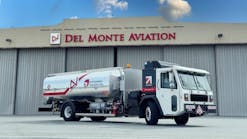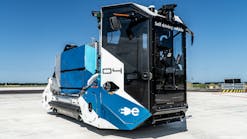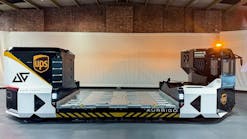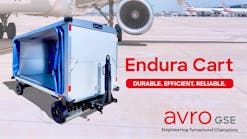Lavatory service carts, commonly known as lav carts, serve a critical function in aviation ground operations. These carts are utilized by ground crews to evacuate waste from and replenish water in the lavatories aboard aircraft.
Typically, aircraft toilets operate similarly to standard residential toilets, utilizing water to flush waste. Lav carts not only empty the waste tanks but also refill them with water for flushing purposes. Additionally, the servicing process involves using a blue disinfecting concentrate to maintain hygiene.
Despite their uniform functionality, lav carts can vary significantly. According to Guillermo Gonzalez, sales and rental manager at Aeroservicios USA, key differences include the size of the tanks and the type of power used for the pumps. He notes that larger aircraft, particularly wide-body models, require lavatory trucks rather than carts due to their size.
When considering the purchase or rental of a lav cart, Gonzalez emphasizes the importance of the tank size, tank material, hoses, pumps, and the type of disinfectant used. Lav carts generally have two main tanks — one for waste and another for clean water — each one is equipped with its own hose and coupler.
Tank materials and sizes can vary, and Aeroservicios USA offers a diverse range of lav carts. These carts share several qualities, such as being lightweight and easily towable. They feature a hot-dip galvanized chassis that eliminates the need for repainting, high-quality tanks, hoses and pumps.
Additionally, their lav carts are equipped with a Fill-Rite meter for measuring water in gallons.
Depending on the model, optional features may include additional rear steps, access stairs, various hose lengths, break-away couplings, Wye couplings, slide drains, wheel chocks, and a lav hose basket, which can also accommodate tools.
For example, the Standard GSE STD-LCE-110/110 model features two 110-gallon rotationally molded polyethylene tanks for waste and water. Pump options include manual, electric and gasoline.
The STD-LC155/155 model includes two 155-gallon polyethylene tanks, secured with stainless steel straps to prevent movement. It uses a Honda WB20X gas pump housed within a heavy-duty frame and boasts fifth-wheel steering for full mobility.
Similarly, the STD-LCI-250 model is designed for colder climates with a 150-gallon waste capacity and a 100-gallon water capacity, housed in stainless steel tanks. Its engine and pump are encased in a galvanized steel enclosure, insulated with polyisocyanurate foam to withstand winter conditions.
Highlighting the distinct features of these models, Gonzalez points out the STD-LCE-110/110 is electric and has a low profile with an optional solar panel. The STD-LC155/155 is notable for its easy towability and lightweight design, while the STD-LCI-250 is insulated for operation in cold environments.





